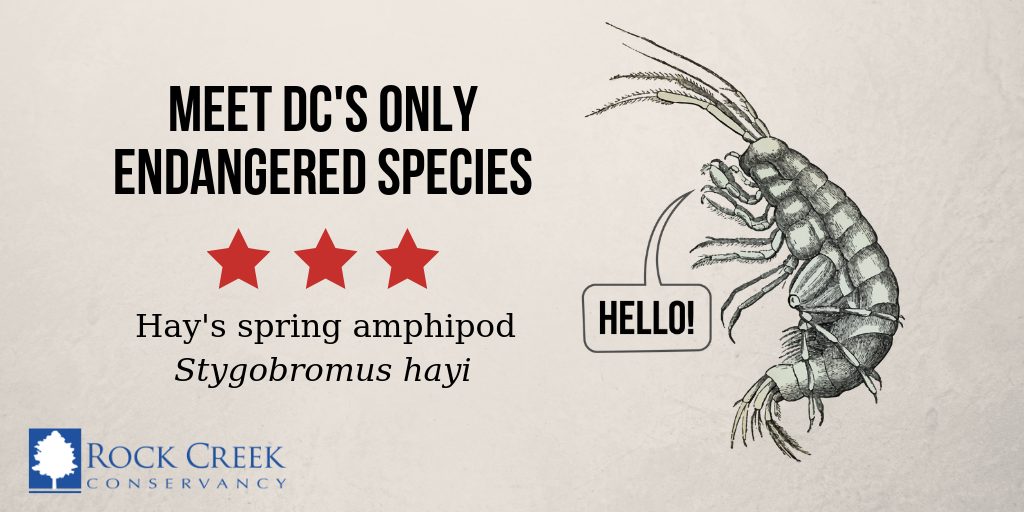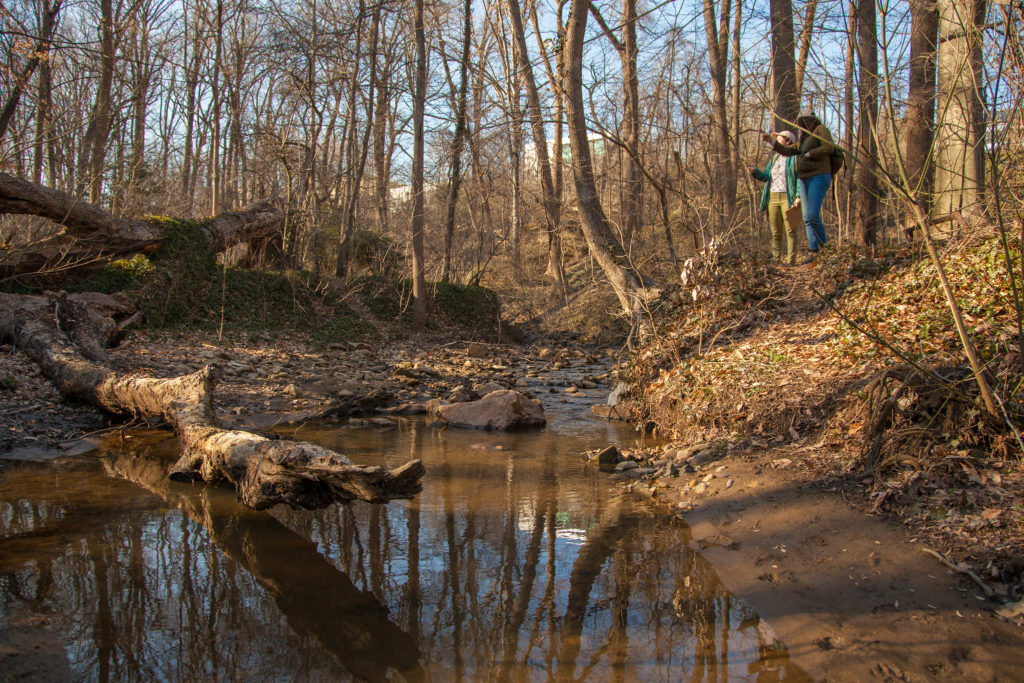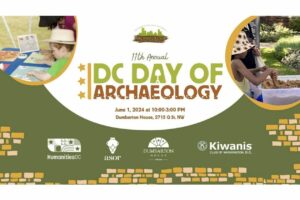
Ed. Note: The following was written by staff of the Rock Creek Conservancy. PoPville is proud to be a media sponsor for 2019.
Hay’s Spring Spotlight on Endangered Species Day
Today, Rock Creek Conservancy is thrilled to announce our new collaboration with PoPville! For those of you who don’t know us, the Conservancy is a local environmental organization and an official philanthropic partner to Rock Creek Park. We are dedicated to restoring Rock Creek and its parks as a natural oasis for all people to appreciate and protect. As we work together, you can expect monthly features from us about all that Rock Creek and Rock Creek Park has to offer and how you can help us restore this unique urban oasis that winds through the heart of our city.
What better way to kick off the relationship than to celebrate Rock Creek’s one and only endangered species — the Hay’s spring amphipod (Stygobromus hayi). These five facts about the Hay’s spring amphipod are sure to impress all the nature lovers at your next networking happy hour.
IMPORTANT: While the facts below are sure to pique your amphipod interests, it is vital that you don’t go searching for them in the wild. There are so few Hay’s spring amphipods left that disturbance to their habitat could easily result in their extinction.
1) Endangered in DC
The Hay’s spring amphipod was first discovered in 1940. Since its discovery, this crustacean has only ever been found in eight small seepage springs along Rock Creek. Because of its small population, sensitivity to urban development, and changes in water quality the animal was officially declared endangered in 1982.

In 2016, Mayor Bowser made the Hay’s spring amphipod the official amphipod of DC. Illustration via the DC Department of Energy and the Environment.
2) DC “State” Amphipod
In 2016, this shrimp-like animal was named the official state amphipod of Washington, DC! As far as we know, Washington, DC is the only “state” with an official amphipod.
Because it is only found in a few small seepage springs and it is incredibly dependent on local water quality, this crustacean is the perfect spokes-creature to convey the importance of our work to restore Rock Creek.

The Hay’s spring amphipod is colorless and eyeless as a result of spending its entire life underground in seepage springs. Image via Michelle Brown/Smithsonian Institution, National Museum of Natural History, Department of Invertebrate Zoology.
3) Life Underground
This critter lives its entire life amongst soggy leaf litter, underground in seepage springs. As a result, Stygobromus hayi have no eyes and no pigmentation. Why would you need them if you never see the light of day? These critters also have longer legs than other amphipods, presumably to feel their way around the dark crevices they call home.
4) DNA Detectives
Understanding exactly where an animal lives is critical to conservation and management. However, for tiny underground animals, that is easier said than done. In order to study them without disturbing their habitat, scientists analyze the water for trace amounts of amphipod DNA. When the DNA is present, we know that the amphipod is too!
5) Stormwater Challenges
The main threats to this native DC resident are habitat destruction and water pollution. Stormwater flooding can mean entire amphipod habitats get washed away. Plus, they are very susceptible to changes in the environment that come from urban stormwater pollution. For instance, salt from the road affects the salinity of the water they live in and can make it impossible for them to survive.

Stormwater runoff is a threat to the Hay’s spring amphipod and Rock Creek as a whole. In this image, two Conservancy staff members discuss stormwater threats and plan for a volunteer event as they survey Melvin Hazen Creek, which flows into Rock Creek. Photo via Rock Creek Conservancy.
Now that you know a bit more about DC’s own endangered species, we hope that you will help us protect it! The threats to this iconic species are also some of the biggest threats to the health of Rock Creek. Join us to stop stormwater pollution in Rock Creek by attending our volunteer events, supporting green infrastructure, and working outside-in in to keep neighborhood litter, pet waste, and stormwater from flowing into Rock Creek!
Want more amphipod facts or to learn more about our work? Check out the full blog on our website.
Recent Stories

For many remote workers, a messy home is distracting.
You’re getting pulled into meetings, and your unread emails keep ticking up. But you can’t focus because pet hair tumbleweeds keep floating across the floor, your desk has a fine layer of dust and you keep your video off in meetings so no one sees the chaos behind you.
It’s no secret a dirty home is distracting and even adds stress to your life. And who has the energy to clean after work? That’s why it’s smart to enlist the help of professionals, like Well-Paid Maids.

Unlock Peace of Mind for Your Family! Join our FREE Estate Planning Webinar for Parents.
🗓️ Date: April 25, 2024
🕗 Time: 8:00 p.m.
Metropolitan Beer Trail Passport
The Metropolitan Beer Trail free passport links 11 of Washington, DC’s most popular local craft breweries and bars. Starting on April 27 – December 31, 2024, Metropolitan Beer Trail passport holders will earn 100 points when checking in at the
DC Day of Archaeology Festival
The annual DC Day of Archaeology Festival gathers archaeologists from Washington, DC, Maryland, and Virginia together to talk about our local history and heritage. Talk to archaeologists in person and learn more about archaeological science and the past of our







